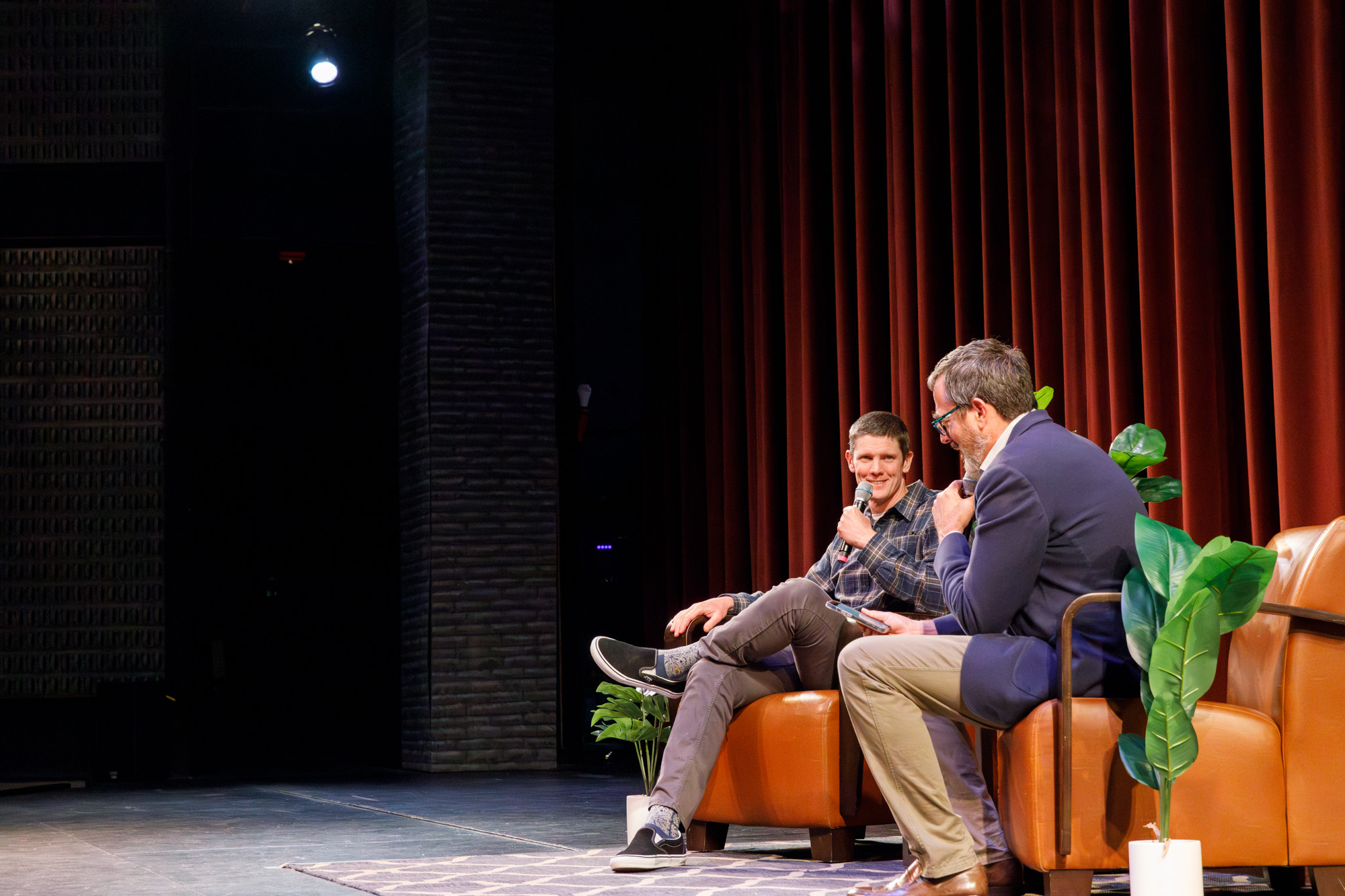On May 15th, we had the pleasure of hosting “California Forever?”, a Town Hall event at Napa Valley College Performing Arts Center that drew more than 125 engaged community members—some of our neighbors from Solano County joined Napa County residents to learn about this timely issue.
The evening featured a dynamic conversation between Conor Dougherty, New York Times reporter, and Terence Mulligan, President & CEO of Napa Valley Community Foundation, on the topic of the California Forever project, which aims to transform agricultural land in Solano County into a new, dense planned community.
We are grateful to Napa Valley College for their hospitality and to Conor for sharing his time so generously.
Conor Dougherty provided a detailed overview of the controversial California Forever project, discussing its origins and the secrecy that initially surrounded it. “Out of nowhere, a company that nobody has heard of, that has no discernable business, and no identifiable principles…starts buying all this land. 10,000, then 60,000 acres—a little more than twice the size San Francisco. There was a huge question of who is this?” Conor was the first reporter to break the story nationally, and identify the investors in a blockbuster New York Times article, The Silicon Valley Elite Who Want to Build a City from Scratch.
The conversation explored how California’s approach to development has evolved. Conor highlighted the difference between past large-scale projects and today’s regulatory environment, which complicates the development of housing. Conor explained, “Proponents of the project say that if you’re going to really take a bite out of the housing problem, you need to revive what’s called Greenfield development, which is a really nerdy way of saying building in the middle of nowhere…but to do it in a different way where once you get there, it would be more dense, with less sprawl.”
During the Q&A session, several pressing concerns were raised by attendees:
- Balancing housing development with the preservation of agricultural land.
- Potential economic benefits versus risks of economic segregation.
- Ensuring meaningful community involvement to ensure projects meet local needs and gain public support.
- Ensuring environmental sustainability and thoughtful community planning.
As Terence shared at the Town Hall, an important part of our job is to try to build a stronger sense of community, a more cohesive sense of community, and one way that we do that is by hosting these Town Hall meetings. We love events like this precisely because they spark dialogue and catalyze communities to learn together, and perhaps to act together, too. We thank everyone who attended and participated in this important conversation on housing.
If you missed the event, you can watch the entire discussion below:






















